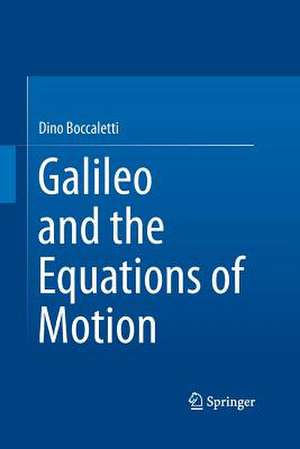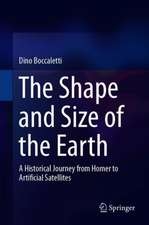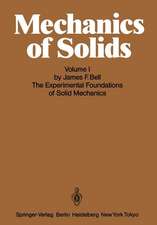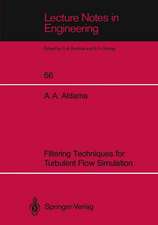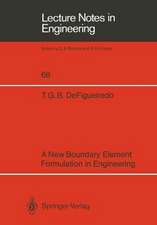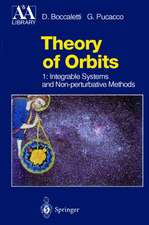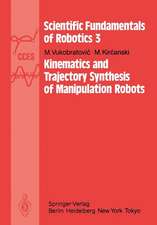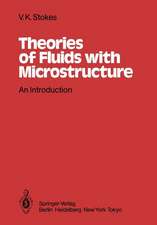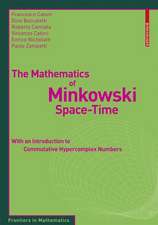Galileo and the Equations of Motion
Autor Dino Boccalettien Limba Engleză Paperback – 23 aug 2016
| Toate formatele și edițiile | Preț | Express |
|---|---|---|
| Paperback (1) | 382.18 lei 43-57 zile | |
| Springer International Publishing – 23 aug 2016 | 382.18 lei 43-57 zile | |
| Hardback (1) | 389.49 lei 43-57 zile | |
| Springer International Publishing – 28 aug 2015 | 389.49 lei 43-57 zile |
Preț: 382.18 lei
Nou
Puncte Express: 573
Preț estimativ în valută:
73.13€ • 76.56$ • 60.51£
73.13€ • 76.56$ • 60.51£
Carte tipărită la comandă
Livrare economică 07-21 aprilie
Preluare comenzi: 021 569.72.76
Specificații
ISBN-13: 9783319367903
ISBN-10: 3319367900
Pagini: 175
Ilustrații: XIV, 175 p.
Dimensiuni: 155 x 235 mm
Greutate: 0.28 kg
Ediția:Softcover reprint of the original 1st ed. 2016
Editura: Springer International Publishing
Colecția Springer
Locul publicării:Cham, Switzerland
ISBN-10: 3319367900
Pagini: 175
Ilustrații: XIV, 175 p.
Dimensiuni: 155 x 235 mm
Greutate: 0.28 kg
Ediția:Softcover reprint of the original 1st ed. 2016
Editura: Springer International Publishing
Colecția Springer
Locul publicării:Cham, Switzerland
Cuprins
Part I The Theories on the Motion of Bodies in the Classical Antiquity.- Kinematics among the Greeks.- Dynamics in the Opinion of Aristotle and his Continuators.- The Theories of Motion in the Middle Ages and in the Renaissance.- The first substantial Criticisms to Aristotelian Mechanics – Philoponus and Avempace.- The medieval Kinematics.- Part II A brief Chronology of Galileo’s Life.- The young Galileo and the De Motu.- The Inertia Principle.-The Law of Fall and the Motion of Projectiles.- The Principle of Relativity.
Recenzii
“The purpose of this book is to explain how Galileo gradually transformed from a believer in the Archimedian approach to eventually arrive at the new insights of these laws of motion. Boccaletti carefully analyses the available texts to understand this transformation. This is a study mainly addressing the professional historian.” (Adhemar Bultheel, EMS European Mathematical Society, eruo-math-soc.eu, November, 2015)
Notă biografică
Dino Boccaletti was Professor of Celestial Mechanics at the University of Rome “La Sapienza” from 1987 until his retirement, and was previously Professor in the Institution of Mathematics at the university. In addition to his teaching and supervisory responsibilities, Prof. Boccaletti conducted research in the fields of Physics of Elementary Particles, Theoretical Astrophysics, Theory of Gravitational Waves, Stellar Dynamics, Celestial Mechanics, and Mathematical Physics. He has published a number of papers in leading journals, including Nature, Physical Review D, and Astronomy & Astrophysics, and has acted as reviewer for various scientific journals. He is co-author, with G. Pucacco, of the two-volume Springer book Theory of Orbits, which is used for advanced courses in Celestial Mechanics and Stellar Dynamics at universities across the world.
Textul de pe ultima copertă
This book is intended as a historical and critical study on the origin of the equations of motion as established in Newton's Principia. The central question that it aims to answer is whether it is indeed correct to ascribe to Galileo the inertia principle and the law of falling bodies. In order to accomplish this task, the study begins by considering theories on the motion of bodies from classical antiquity, and especially those of Aristotle. The theories developed during the Middle Ages and the Renaissance are then reviewed, with careful analysis of the contributions of, for example, the Merton and Parisian Schools and Galileo’s immediate predecessors, Tartaglia and Benedetti. Finally, Galileo’s work is examined in detail, starting from the early writings. Excerpts from individual works are presented, to allow the texts to speak for themselves, and then commented upon. The book provides historical evidence both for Galileo's dependence on his forerunners and for the major breakthroughs that he achieved. It will satisfy the curiosity of all who wish to know when and why certain laws have been credited to Galileo.
Caracteristici
Explains when and why certain laws have been credited to Galileo Discusses Galileo's dependence on his forerunners Contextualizes Galileo's texts and explains his kinematic terms in the light of present concepts Allows the modern reader to read directly from Galileo's texts Includes supplementary material: sn.pub/extras
